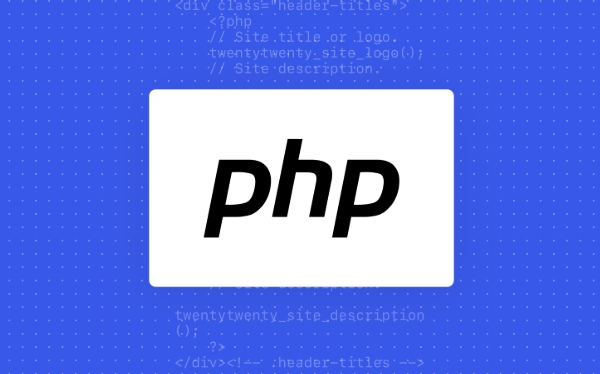To check whether the function in PHP exists, the function_exists() function is mainly used. 1. function_exists() receives a string parameter to determine whether the specified function has been defined; 2. This method is valid for both user-defined functions and built-in functions; 3. The function name is case-insensitive when judging; 4. It is often used in scenarios such as plug-in development, conditional execution, and maintaining backward compatibility; 5. In object-oriented programming, method_exists() and class_exists() should be used to check whether the method and class exist respectively. These functions help avoid fatal errors and improve code robustness and flexibility.

In PHP, checking whether a function exists is useful, especially when working with plugins, conditional logic, or dynamic code execution. The language provides a built-in way to do this, and it's straightforward once you know the right tool.

Use function_exists() to check
PHP has a dedicated function called function_exists() that checks if a function is defined and available to be called. It takes one argument: the name of the function as a string.
if (function_exists('my_custom_function')) {
my_custom_function();
} else {
echo 'Function not found.';
}This is especially handy when you're including files conditionally or using third-party libraries where certain functions might not always be available.

A few things to note:
- Function names are case-insensitive in PHP, so
'My_Custom_Function'and'my_custom_function'will both work. - This function works for both user-defined and built-in PHP functions.
When is this useful in real projects?
There are several situations where checking for a function's existence is important:

- Plugins or extensions : You might want to check if another plugin has already defined a helper function to avoid conflicts.
- Conditional execution : Only run code if a certain function is available, especially when dealing with optional features.
- Backward compatibility : Some functions may only exist in newer PHP versions, so checking helps avoid fatal errors.
For example, if you're writing a WordPress plugin and want to ensure a theme provides a specific function before calling it, function_exists() becomes a go-to tool.
Alternative: Use class methods or autoloading (for OOP)
If you're working in an object-oriented environment, checking for a function isn't as direct. Instead, you'd typically use:
-
method_exists()— to check if a method exists in a class -
class_exists()— to check if a class is defined
These are useful when you're not dealing with standalone functions but rather methods tied to classes.
Example:
if (class_exists('MyClass') && method_exists('MyClass', 'myMethod')) {
$obj = new MyClass();
$obj->myMethod();
}Autoloading can also play a role here — if your classes are autoloaded, you may not need to manually check for their existence in most cases.
So, to check if a function exists in PHP, the main method is function_exists() . For object-oriented code, use method_exists() or class_exists() as needed. These tools help avoid fatal errors and make your code more robust and flexible.
Basically that's it.
The above is the detailed content of How can you check if a function exists in PHP?. For more information, please follow other related articles on the PHP Chinese website!

Hot AI Tools

Undress AI Tool
Undress images for free

Undresser.AI Undress
AI-powered app for creating realistic nude photos

AI Clothes Remover
Online AI tool for removing clothes from photos.

Clothoff.io
AI clothes remover

Video Face Swap
Swap faces in any video effortlessly with our completely free AI face swap tool!

Hot Article

Hot Tools

Notepad++7.3.1
Easy-to-use and free code editor

SublimeText3 Chinese version
Chinese version, very easy to use

Zend Studio 13.0.1
Powerful PHP integrated development environment

Dreamweaver CS6
Visual web development tools

SublimeText3 Mac version
God-level code editing software (SublimeText3)
 PHP Variable Scope Explained
Jul 17, 2025 am 04:16 AM
PHP Variable Scope Explained
Jul 17, 2025 am 04:16 AM
Common problems and solutions for PHP variable scope include: 1. The global variable cannot be accessed within the function, and it needs to be passed in using the global keyword or parameter; 2. The static variable is declared with static, and it is only initialized once and the value is maintained between multiple calls; 3. Hyperglobal variables such as $_GET and $_POST can be used directly in any scope, but you need to pay attention to safe filtering; 4. Anonymous functions need to introduce parent scope variables through the use keyword, and when modifying external variables, you need to pass a reference. Mastering these rules can help avoid errors and improve code stability.
 How to handle File Uploads securely in PHP?
Jul 08, 2025 am 02:37 AM
How to handle File Uploads securely in PHP?
Jul 08, 2025 am 02:37 AM
To safely handle PHP file uploads, you need to verify the source and type, control the file name and path, set server restrictions, and process media files twice. 1. Verify the upload source to prevent CSRF through token and detect the real MIME type through finfo_file using whitelist control; 2. Rename the file to a random string and determine the extension to store it in a non-Web directory according to the detection type; 3. PHP configuration limits the upload size and temporary directory Nginx/Apache prohibits access to the upload directory; 4. The GD library resaves the pictures to clear potential malicious data.
 Commenting Out Code in PHP
Jul 18, 2025 am 04:57 AM
Commenting Out Code in PHP
Jul 18, 2025 am 04:57 AM
There are three common methods for PHP comment code: 1. Use // or # to block one line of code, and it is recommended to use //; 2. Use /.../ to wrap code blocks with multiple lines, which cannot be nested but can be crossed; 3. Combination skills comments such as using /if(){}/ to control logic blocks, or to improve efficiency with editor shortcut keys, you should pay attention to closing symbols and avoid nesting when using them.
 How Do Generators Work in PHP?
Jul 11, 2025 am 03:12 AM
How Do Generators Work in PHP?
Jul 11, 2025 am 03:12 AM
AgeneratorinPHPisamemory-efficientwaytoiterateoverlargedatasetsbyyieldingvaluesoneatatimeinsteadofreturningthemallatonce.1.Generatorsusetheyieldkeywordtoproducevaluesondemand,reducingmemoryusage.2.Theyareusefulforhandlingbigloops,readinglargefiles,or
 Tips for Writing PHP Comments
Jul 18, 2025 am 04:51 AM
Tips for Writing PHP Comments
Jul 18, 2025 am 04:51 AM
The key to writing PHP comments is to clarify the purpose and specifications. Comments should explain "why" rather than "what was done", avoiding redundancy or too simplicity. 1. Use a unified format, such as docblock (/*/) for class and method descriptions to improve readability and tool compatibility; 2. Emphasize the reasons behind the logic, such as why JS jumps need to be output manually; 3. Add an overview description before complex code, describe the process in steps, and help understand the overall idea; 4. Use TODO and FIXME rationally to mark to-do items and problems to facilitate subsequent tracking and collaboration. Good annotations can reduce communication costs and improve code maintenance efficiency.
 Quick PHP Installation Tutorial
Jul 18, 2025 am 04:52 AM
Quick PHP Installation Tutorial
Jul 18, 2025 am 04:52 AM
ToinstallPHPquickly,useXAMPPonWindowsorHomebrewonmacOS.1.OnWindows,downloadandinstallXAMPP,selectcomponents,startApache,andplacefilesinhtdocs.2.Alternatively,manuallyinstallPHPfromphp.netandsetupaserverlikeApache.3.OnmacOS,installHomebrew,thenrun'bre
 How to access a character in a string by index in PHP
Jul 12, 2025 am 03:15 AM
How to access a character in a string by index in PHP
Jul 12, 2025 am 03:15 AM
In PHP, you can use square brackets or curly braces to obtain string specific index characters, but square brackets are recommended; the index starts from 0, and the access outside the range returns a null value and cannot be assigned a value; mb_substr is required to handle multi-byte characters. For example: $str="hello";echo$str[0]; output h; and Chinese characters such as mb_substr($str,1,1) need to obtain the correct result; in actual applications, the length of the string should be checked before looping, dynamic strings need to be verified for validity, and multilingual projects recommend using multi-byte security functions uniformly.
 Learning PHP: A Beginner's Guide
Jul 18, 2025 am 04:54 AM
Learning PHP: A Beginner's Guide
Jul 18, 2025 am 04:54 AM
TolearnPHPeffectively,startbysettingupalocalserverenvironmentusingtoolslikeXAMPPandacodeeditorlikeVSCode.1)InstallXAMPPforApache,MySQL,andPHP.2)Useacodeeditorforsyntaxsupport.3)TestyoursetupwithasimplePHPfile.Next,learnPHPbasicsincludingvariables,ech






